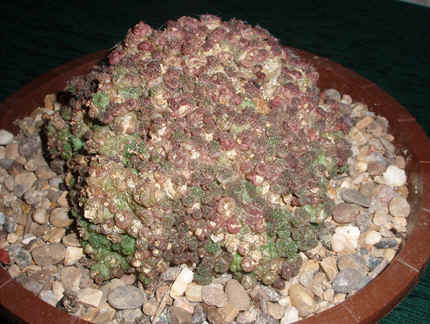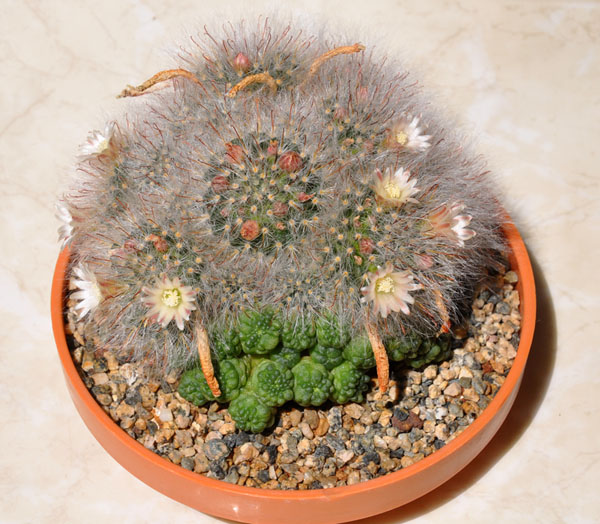Ed:
I
have been exhorting members to write of their favourite Mammillaria.
Little did I realise that the first offering was going to be something so
extreme! Thanks Doug.
Very little has been written about this cultivar, so I decided to change all that. Let us start at the beginning. The plant has been known for over 30 years, and has never been found in the wild. It is said to have been produced as an aberrant cristate and monstrose offset from a normal plant of Mammillaria bocasana and propagated in the USA by a collector called Fred. Whether this is strictly true or not is debatable, but it is a nice story. Fred appears to be more common in the USA than in Europe, plants here being few and far between. I saw no plants at Cactus Gem Nursery in San Jose, but found a large size 18” diameter one growing at the Dan Bach Nursery in Tucson amongst elderly Melocactus with cephalia resembling small chimneys.

Doug’s
plant of Mammillaria
bocasana ‘Fred’
